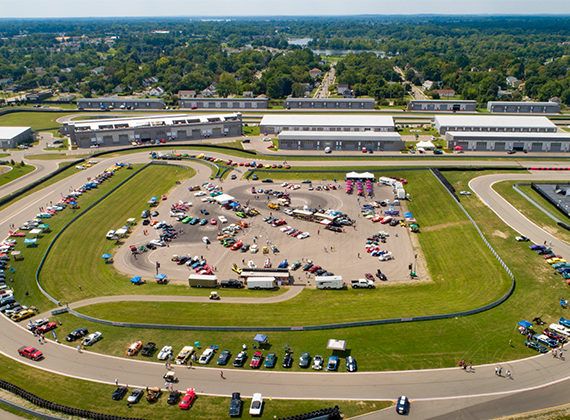Harmonious Design: Why Landscape Architecture and Nature Play are a Natural Fit
If you grew up between the 80s or 90s, you likely spent a decent amount of your childhood outdoors at play with neighborhood kids, friends, or siblings. There was no agenda, no plan for the day of what you were going to do; you had freedom. Entertainment was up to your imagination and ingenuity. You had the independence to take risks that you would otherwise not have the opportunity for, and from those experiences, you learned what to do and not to do. Through this time outdoors, you learned your place in life, society, and the natural world.

While you may not have considered what you were learning during your time playing outside, these moments played an important role in shaping your life and your connection with nature. Those who are now raising their own kids are aware that times have changed, and the option to play freely outdoors is absent for most kids. But what does this mean for the next generation, and why is playing in nature so important?
After moving to Southern California from Upstate New York with my two young kids, I noticed a contrast between the large open green spaces of New York with the small postage stamp spaces in California. Despite this, I made the most of what access to nature we did have by taking walks to the beach or park after work with the kids and spending the weekends exploring the Santa Monica Mountain range or playing at the beach. After four years in Southern California, I wanted more space for my kids to grow and to put our roots down somewhere. I contemplated returning to Upstate New York, which I viewed as an amazing place to grow up, however, we decided to start our next adventure in Houston, Texas.
A lot has changed in the 12 years since I made the move. My oldest kids are now grown, and I have two younger children, as well. The youngest two have even less access to free play in nature than their older siblings, due in part to the increasing development of open spaces, stricter HOA and City requirements, and the trend toward more structured supervised play. You might be wondering why is this an issue? Why is free play in nature, in particular, so important?
In 2005, author Richard Louv wrote Last Child in the Woods. In this book, he coined the term “Nature Deficit Disorder,” which is the idea that humans, especially children, are spending more time indoors than they did in the past and that this is having adverse effects on their physical and mental health. Since writing this book, Richard Louv has gone on to establish the Children & Nature Network, as well as publish additional texts on the subject.

Richard Louv is also responsible for sparking the forest kindergartens movement in the US after it had already gained traction in other parts of the world. The first forest kindergarten was established in Denmark in the 1950s and spread to other parts of Europe and Asia.
I first learned about the concept of forest kindergartens while studying landscape architecture at Cornell University in early 2000. The concept of the forest kindergarten resonated with me as someone who grew up playing outdoors for most of my early years. I also attended both a middle school and high school that encouraged hands-on learning in the outdoors. I truly believe that those experiences I had outdoors left a profound effect on the person I became and the profession I chose.
The connection between landscape architecture and “Nature Play” is a natural fit. As landscape architects, we have a responsibility to work in harmony with nature, creating spaces in the built environment that bring humans and the natural world together. We design playgrounds and schoolyards, neighborhood parks, trail systems, and so much more to connect humans with the natural world around them. In recent years, green schoolyards have become an important focus as the average child only spends one hour per day outside, primarily during school hours. Green schoolyards are multifunctional in that they provide space for both students and teachers and can be a place to play, learn, explore, and grow for the whole community. In many urban communities, they may serve as the only accessible green space within walking distance.
According to the Children and Nature website, “In most parts of the developed world, children face full days of structured activities: school, sports, tutoring, lessons and more.” Research finds that the average American child spends only 4-7 minutes outdoors in unstructured play. This is “a dramatic change from children just a generation ago.” This limited time for self-led and group outdoor play results in children missing out on key moments for physical, social, and cognitive growth. There have been many studies over the last two decades that have shown improved test scores, behavior, and focus among school children when they have views or access to nature while at school. Several organizations and initiatives have responded to this research and are working towards creating environments for healthy human development while at the same time creating a healthy biosphere for generations to come.
I have been lucky enough to participate in the planning, development, and implementation of several school gardens, outdoor classrooms, and natural play learning environments. This is a passion of mine both as a parent and as a professional landscape architect.
One project that I have had the pleasure to be a part of is the Becky Gates Children’s Center playground renovation. Located on the Texas A&M University campus in College Station, the existing playground included traditional structures that were roughly 20 years old and starting to fall apart. Additionally, the site had drainage issues as well as a lack of shade. Director, Erica Ritter, had the vision to redesign the outdoor area into an outdoor classroom and natural playscape where children could use their whole body and develop all five senses by utilizing natural materials. She believed children could reconnect with the natural world and she wanted to create a space that followed the Nature Explore Program, achieving certified status as a Nature Explore Outdoor Classroom.
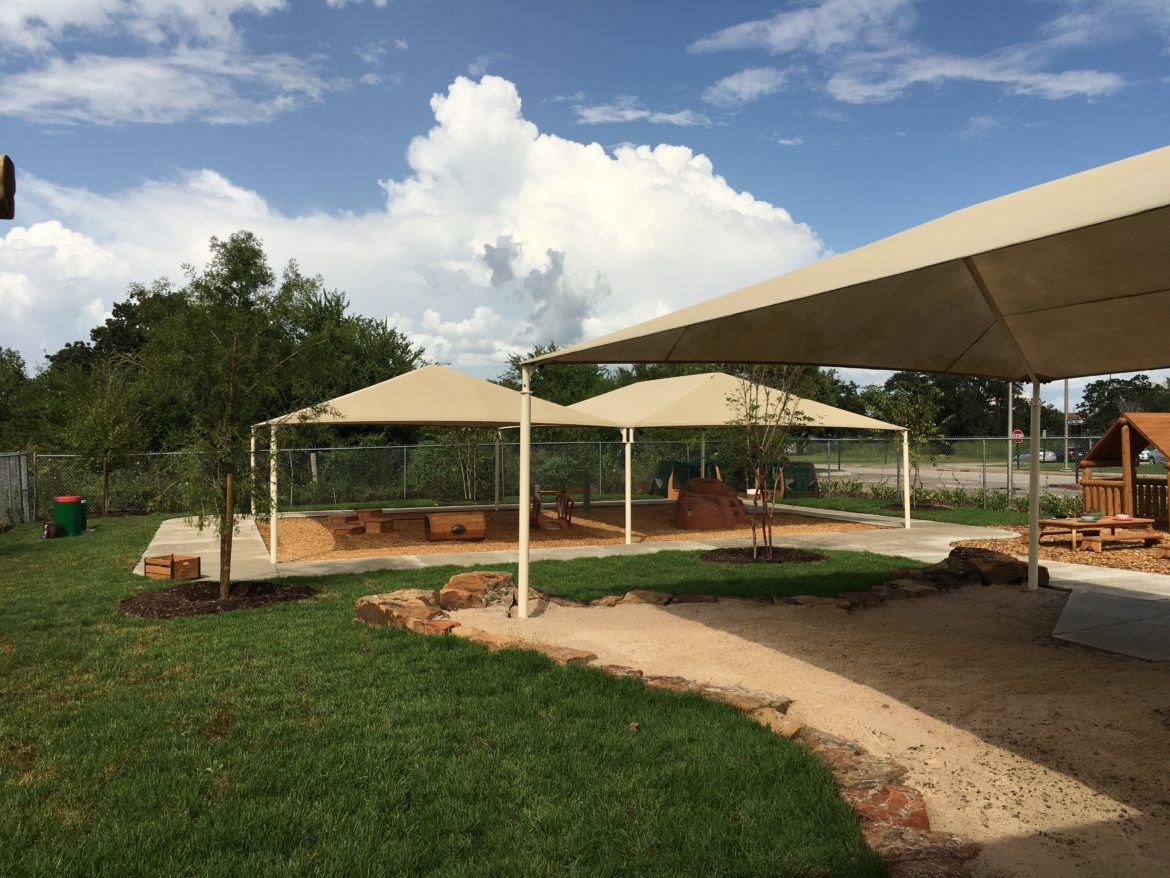
Erica Ritter reached out to the Landscape Architecture and Urban Planning Department at Texas A&M University and pitched the idea as a potential class project to Dr. Kenneth Hurst. Dr. Hurst is a Licensed Landscape Architect and CPSI with over 20 years of experience building children’s play environments. He was excited by the idea and had one of his undergrad studio classes develop conceptual plans for the new playground based on the Nature Explore Outdoor Classroom model. The top ideas were then condensed into one plan developed by several graduate students. The plan was then provided to the design team to further develop and ultimately implement into the final project that is now built today.
The Becky Gates Children’s Center is part of the Texas A&M University Student Affairs Department and provides care for infants and children ages 12 months to 5 years old. The play area is separated by age group, with infants, toddlers, and preschoolers each having their own dedicated play space. To become certified as a Nature Explore Outdoor Classroom, each space must incorporate specific elements that are important to both cognitive and physical development.
Some of the elements that were included in the Becky Gates Children’s Center renovation include an entry feature and fencing to separate the different age groups; a music and movement area; a nature art area; a building area; a climbing and crawling area; messy materials area; a storage area; gardening area; a gathering space; water play area; a sand area; and wheeled toy area. Additional features that were included were recycled materials and elements; incorporating locally sourced natural materials; meeting all regulatory standards; native and drought-tolerant trees and plants; and creating a pollinator habitat area. The materials and elements selected were required to be durable and low maintenance. The goal was to maximize the beauty of the area and to foster a love for nature among the children who attend school at the center. The conceptual design provided by the students from the Landscape Architecture Department at Texas A&M, included some of these overall concepts outlined below.
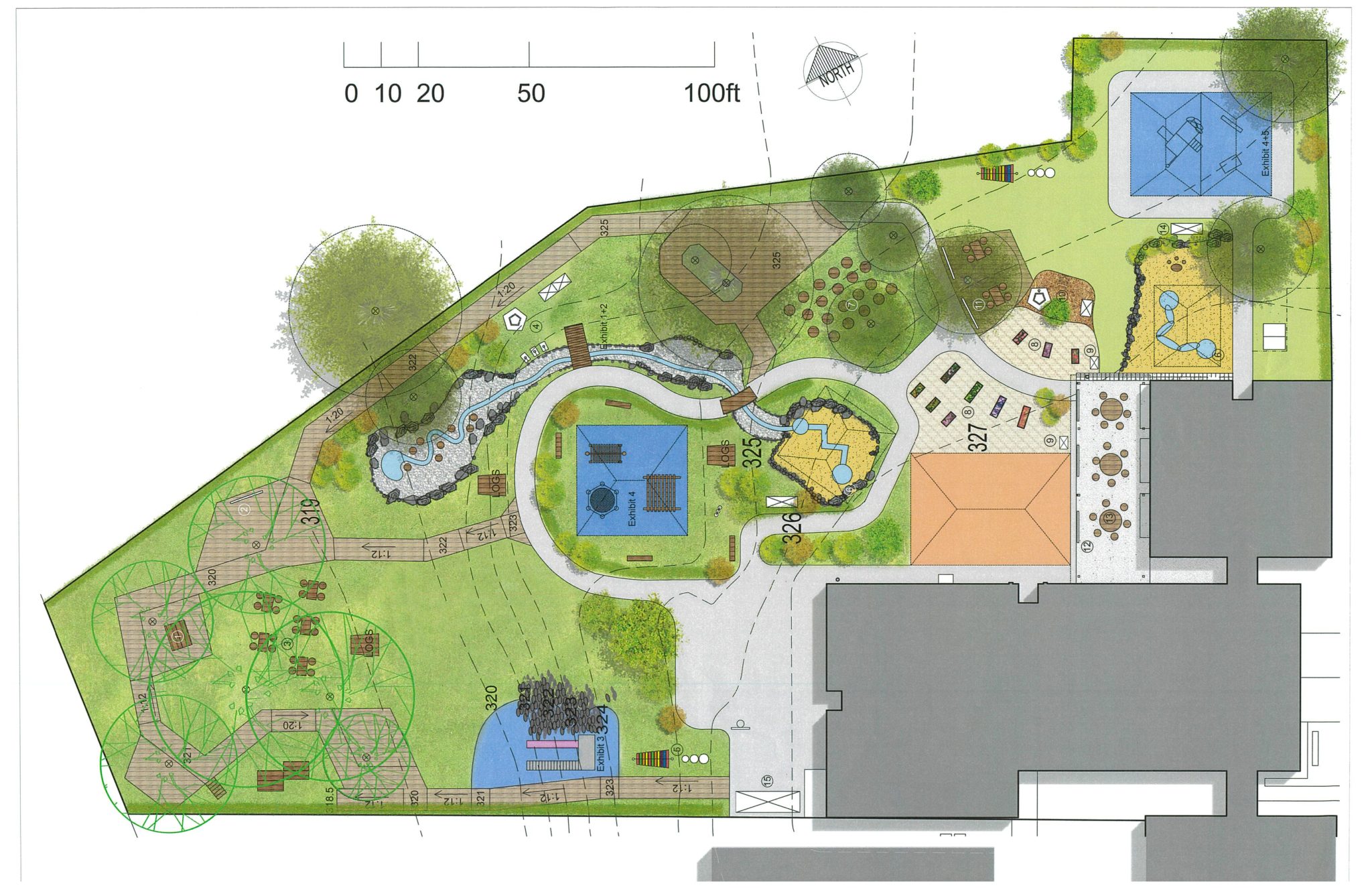
Becky Gates Conceptual Plan
Once receiving the notice to proceed, a topographic survey of the area to be renovated was arranged. There was quite a bit of elevation change present within the playground, and the survey ensured that the various elements were accessible. The results of the survey demonstrated over 10 feet in elevation change from the existing center to the back property chain-link fence. Elements such as the embankment slide, wooden ramp, and rope pull-up, as well as the dry stream bed, which doubles as a drainage channel for the bison pump and water play area, were made possible due to the existing elevation change.
The existing fence was removed, significantly expanding the play area, and the existing trees, both on-site and off-site, were utilized to create a shaded woodland play area. A series of boardwalk ramps were utilized to connect the upper play area to the lower play area. Shade is an absolute necessity for year-round outdoor classrooms in the Southern US, and this design provided gathering space underneath the existing trees to protect from the hot summer temperatures.
Although the playground was originally slated for bidding and construction in the Summer of 2020, the COVID-19 pandemic pushed back the project by 6-9 months. Due to supply issues, some of the elements took longer than originally anticipated. Much to everyone’s relief, the playground reopened in September 2021 for the new school year.
As with any project, challenges can arise, and each project has its own set of moving parts that make it unique. Having a “champion” like Erica Ritter is what made this project successful. I recently connected with Erica to discuss why she chose a natural playground.
E. Violet Mak: What led you to want to naturalize your playground?
Erica Ritter: There were many factors that contributed to naturalizing our playground. There is vast research about the benefits of outdoor play. According to Nature Explore, spending time outdoors increases a child’s critical thinking; problem-solving, science, math, language and literacy, construction and engineering, focus, and creativity. Children also learn how to care for living things and how to be an environmental stewards in outdoor settings. Children who spend time outside are happier, relaxed, and less impulsive. We have seen these results already with our children and, surprisingly, our staff!
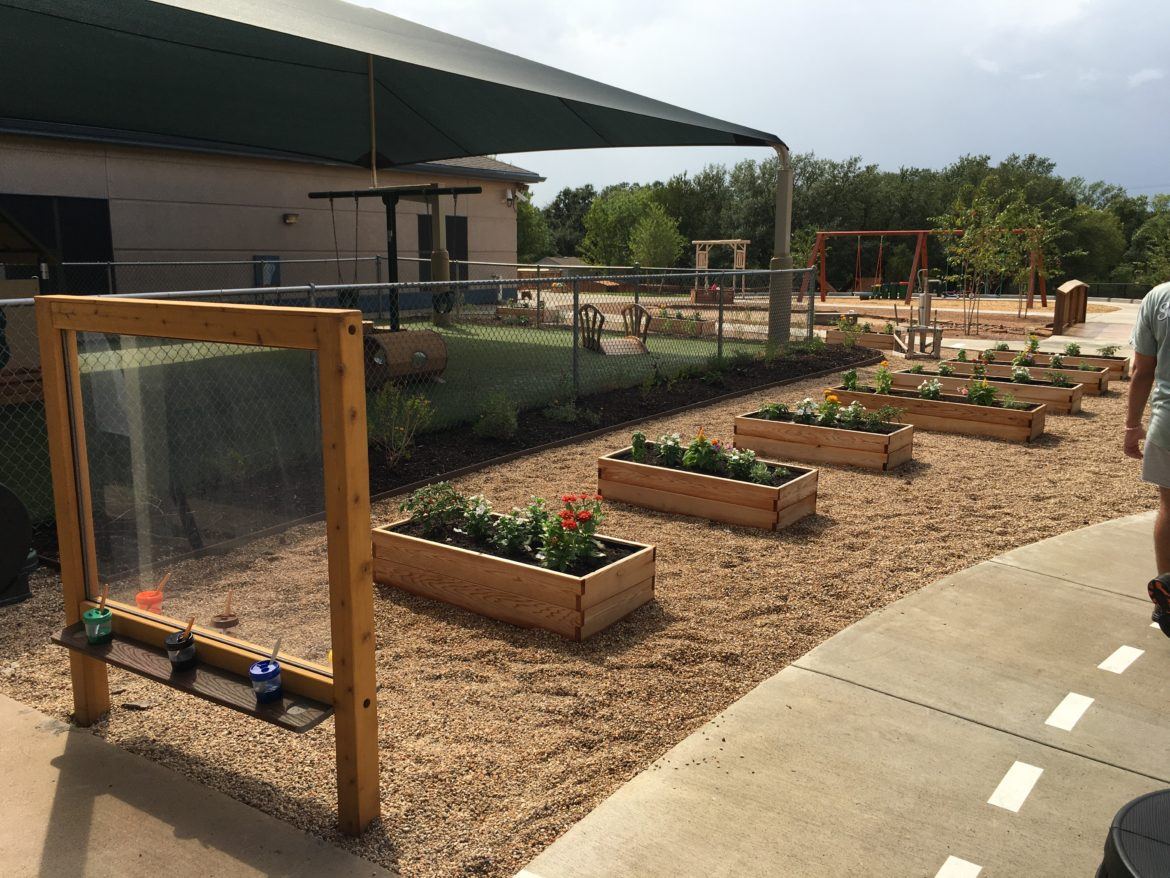
In addition, there is support at the local, state, and national levels for nature-based playgrounds. Government programs such as the Child and Adult Care Food Program, Texas Rising Star, and Child Care Licensing are supportive of nature-based outdoor learning by increasing outdoor time, physical activity, plus more. There are also more types of funding/grant opportunities available to assist with outdoor environments. Nowadays, we see more wellness initiatives and organizations supporting and certifying natural playgrounds such as Nature Explore and OLE Texas! as well as AgriLife Extension programs like Junior Master Gardener and Walk Across Texas.
E. Violet: What were the key factors that made this project successful?
Erica: Buy-in and support is a huge key factor. Without teachers, parents, faculty, and administration buying-in/supporting nature play, we would not have been successful. Without research, governing bodies and organizations supporting these initiatives, people would not buy-in/support. Without grassroots efforts by educators, people do not buy-in/support. Our biggest support came from Texas A&M University.
Collaborations were another key factor. Big projects require diverse groups of people working together toward the same vision/goal. This project brought together architecture and early childhood education – both having to learn about the other to obtain the highest quality outcome. We worked with undergraduate students, graduate students, faculty, administration, families, and other professional experts. Everyone who worked on this project became a family.
E. Violet: What were the challenges you faced planning and implementing this project?
Erica: One challenge was the regulations/standards across expert teams. Each stakeholder has different regulating bodies, and those bodies don’t always talk to each other. Childcare licensing may be slightly different than playground inspection standards which may be slightly different than ADA compliance, etc. It is good to have experts in all regulating areas to not miss anything. This is especially important when building a project for young children. Safety is of the utmost concern.
Another challenge is time. When you begin with the initial idea, it takes time to get people on board and go through the proper channels to get the project done. Allowing procedures and processes to happen properly takes time.
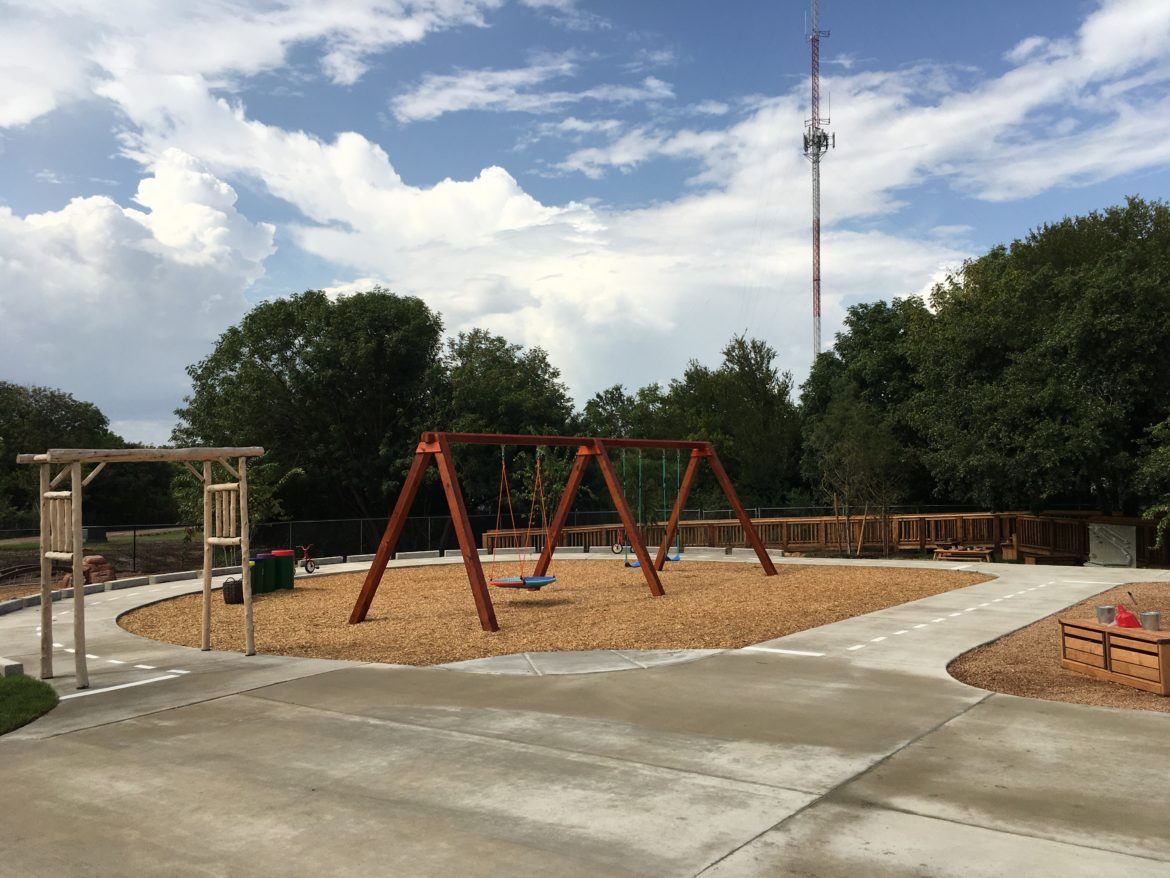
Lastly, shipping became a problem, especially since this project occurred during COVID-19. When items you need are six months to one year out, you become innovative. Work with local builders, etc., to design and build items for you. We were very pleased with the items built locally. Since we moved away from manufacturers, we made sure to include the playground inspection specialist to ensure all structures were built to playground safety standards. This ended up being a very important piece.
E. Violet: Are there any lessons learned that you would like to pass on to someone who is planning to naturalize their playground?
Erica: Stick with it! Our process took three years. There is a lot of planning, training, learning, collaborating, securing funding, etc. It is well worth the wait. What I particularly like about naturalizing playgrounds is that they can fit into many budget sizes. It can be as simple as adding a garden or planting a tree. Use your community to help and assist. Local and national stores will help with projects such as these. Get a community or parent group together to help. Again, people are vested in projects such as these. That was one of the best parts of our process – the involvement of many people to make this project come to fruition. Our group continues to work together even after the completion of the project.
As a landscape architect, it is rare to have the opportunity to work on a project like this with such an amazing team of people. It is clients and projects like this that make me grateful for the work I get to do every day. In the spirit of landscape architecture, I challenge you to do something to make the world a more beautiful and enjoyable place.
About E. Violet Mak
Violet is a Registered Professional Landscape Architect, a Registered Accessibility Specialist, and has over 15 years of experience in landscape architecture and project management. A graduate of Cornell University, she has won the Nina Francesca Schack Memorial Award, given by the Cornell University Landscape Architecture Department to a student in recognition of their compassion, commitment, and perseverance for the enrichment of the environment. Additionally, Violet is a recipient of the Kay Tiller Chapter Service Award, given by the Executive Committee of the Texas Chapter of the American Society of Landscape Architects in recognition of providing admirable and exceptional service to both the Society and landscape architecture in Texas.
Sources/Articles
- Louv, Richard. Last Child in the Woods. 2005.
- https://www.childrenandnature.org/
- https://naturallearning.org/
- https://natureexplore.org/
- https://www.landscapeperformance.org/collections/the-case-for-green-schoolyards
- https://www.tandfonline.com/doi/abs/10.1080/13575279.2011.621889
- https://www.tandfonline.com/doi/full/10.1080/09603123.2019.1656174
- https://www.tandfonline.com/doi/full/10.1080/1350293X.2012.704766
For More Information

